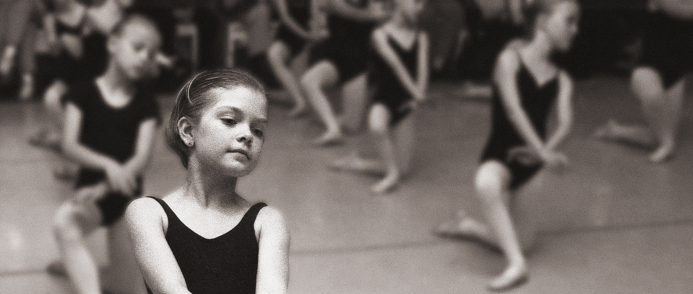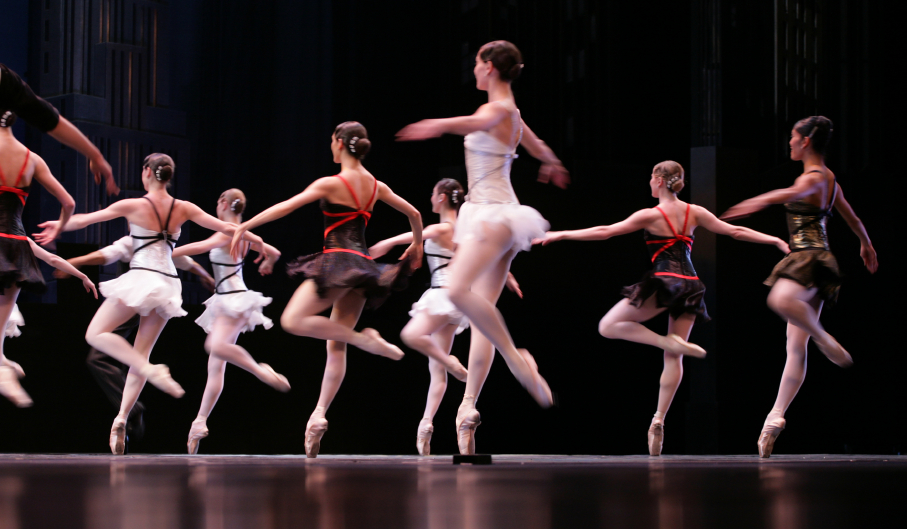by Valerie S. Potsos
“Welcome to your NEW dance team! Now, we are all going to get along and it’s going to be great!”
That’s quite an assumption. As coaches with a new team, we want our dancers to get along. But some of us assume that camaraderie will happen overnight. But, YOU CAN influence how your team will function! It won’t happen magically. Well-planned team building activities will ensure a successful season!
Be proactive. Do NOT wait until there is a conflict to implement team building activities. From your first practice to your last game, it is essential that you use team building as an integral part of your program.
If you are a new team or a veteran team, you need to ask yourself, “What objective do I hope to accomplish with a team building activity?” You also need to ask, “How will I assess their progress?” For example, if you are a new team, Icebreakers and Introduction games are essential. Debrief your Introduction/Icebreaker games by asking, “What did you find out about your members?” “What is something unusual or interesting?” Further, you need to assess whether they seem to feel more comfortable and relaxed.
Or, if you are in the middle of the season, and your team is not getting along, try Perception and Communication games. Communication activities help identify ways that we can improve our interaction skills. How we say something isn’t always how it is interpreted. These types of games can help identify our weak areas. Further, Perception games are generally fun for everyone to use. They are designed to see how participants perceive different situations or objects. Participants learn how to use lateral thinking, to look at things in different ways, and to break down any preconceived stereotypes they might be using.
Group Development games are used to improve the relationship of the individuals and subgroups within the team. You should be aware that when you are conducting Group Development exercises, identification of a conflict or problem between different individuals might become apparent. However, you will be able to solve this problem once it is identified. Debriefing your Group Development activity is crucial so that there isn’t any anger or frustration.
Facilitator or Presentation games help members think about how they instruct a group. These types of games can be especially helpful to your choreographers who are teaching dances or captains who lead warm-ups.
Mid-Course Energizer games are important when the team seems to be losing interest or “going through the motions.” The middle of basketball season or after a competition, these games can get your team recharged and motivated again!
Learning games teach us how to organize our thoughts and ideas. If you have members who are having difficulty memorizing routines, using learning games will test their skills and teach them how to organize their thoughts. These types of games are usually brainteaser type games.
Evaluation exercises are for participants to evaluate either themselves or the program. These are usually used at the end of the year, but can be used throughout the year. As a facilitator, you must make sure that these games are used constructively not destructively.
Self-Management games teach individual group members how to use their time-management and organizational skills. Participants will receive a lot of information and new ideas from other members within the group.
Just as a teacher devises a lesson plan, you must also plan your team building activities. Always debrief with your group. That way, they can analyze what they learned and how they can apply it to practices, games and competitions. (Refer to your UDA Handbook for ideas on how to debrief.)
Remember, not every teambuilding activity is a success. But, you need to keep trying! Find out your team’s personality. What inspires them? Use these observations to plan your activities. Most importantly, your activities should be fun and educational. They can be a great way to break the tension at a tough practice! Good luck and enjoy!
TEAM BUILDING OBJECTIVES
1. To make a point
2. To build team morale
3. To trust each other
4. To become more flexible
5. To reinforce cooperation
6. To reinforce creativity
TYPES OF TEAM EXERCISES
1. Icebreakers
2. Group Development
3. Communication
4. Facilitator/Presentation Skills
5. Energizer
6. Learning
7. Perception
8. Evaluation
9. Self-Management
GREAT GAMES
(These can be found in your UDA Handbook)
1. CD Cover Design – Introduction Game
2. Team Mission Statement – Group Development
3. Balloon Trolleys – Group Development and Communication
4. The Leadership Puzzle – Learning, Perception, and Group Development
5. Drill Downs – Learning and Self Management
RESOURCES
Universal Dance Association
UDA is your best resource for team building games. Call your local rep or ask your staff instructor at camp. UDA will have the latest ideas and games for you at summer camp.
BOOKS
Teambuilding Activities for Every Group – by Alanna Jones
The Big Book of Teambuilding Games – by Edward Scannell
Successful Teambuilding (Baron’s Series) – by Graham Willcocks and Steven Morris
Valerie’s credentials include: UDA Advisor-Trainer, Kimball High School Varsity Dance Coach, Kimball Dance Company Advisor/Director, Motor City All-Star Dance Team, Writer for Dance Spirit, American Cheerleader, and In Motion Magazines, Former Captain of the University of Michigan Dance Team.
If you would like to email Valerie, you can contact her at DemiPlies@aol.com.



